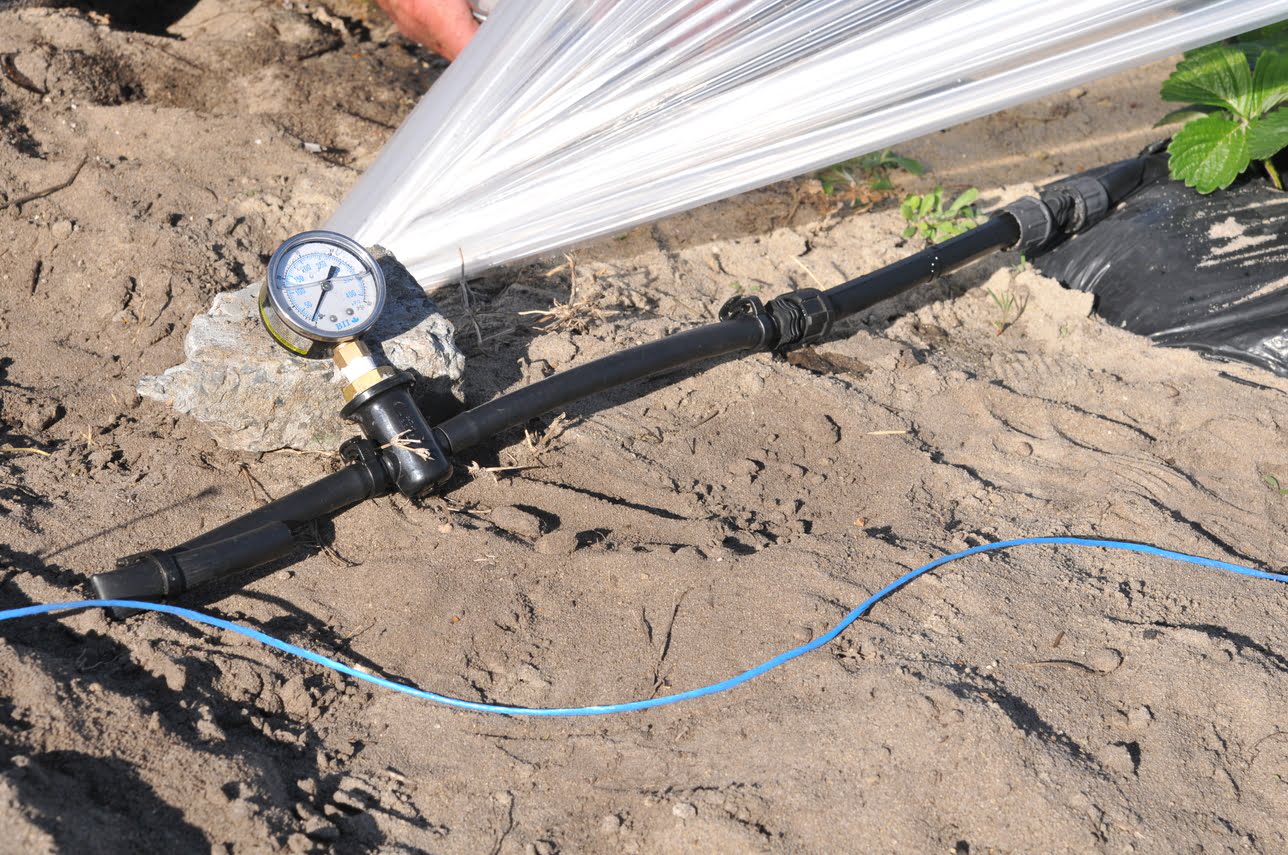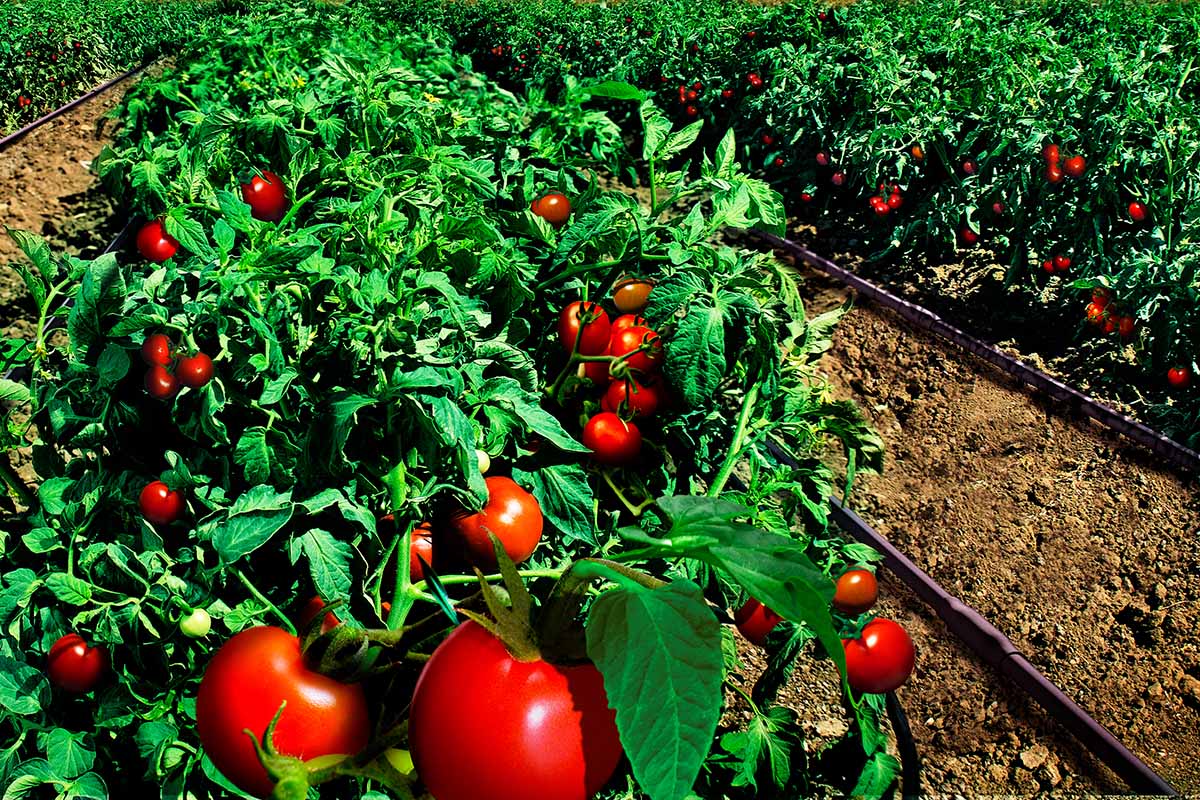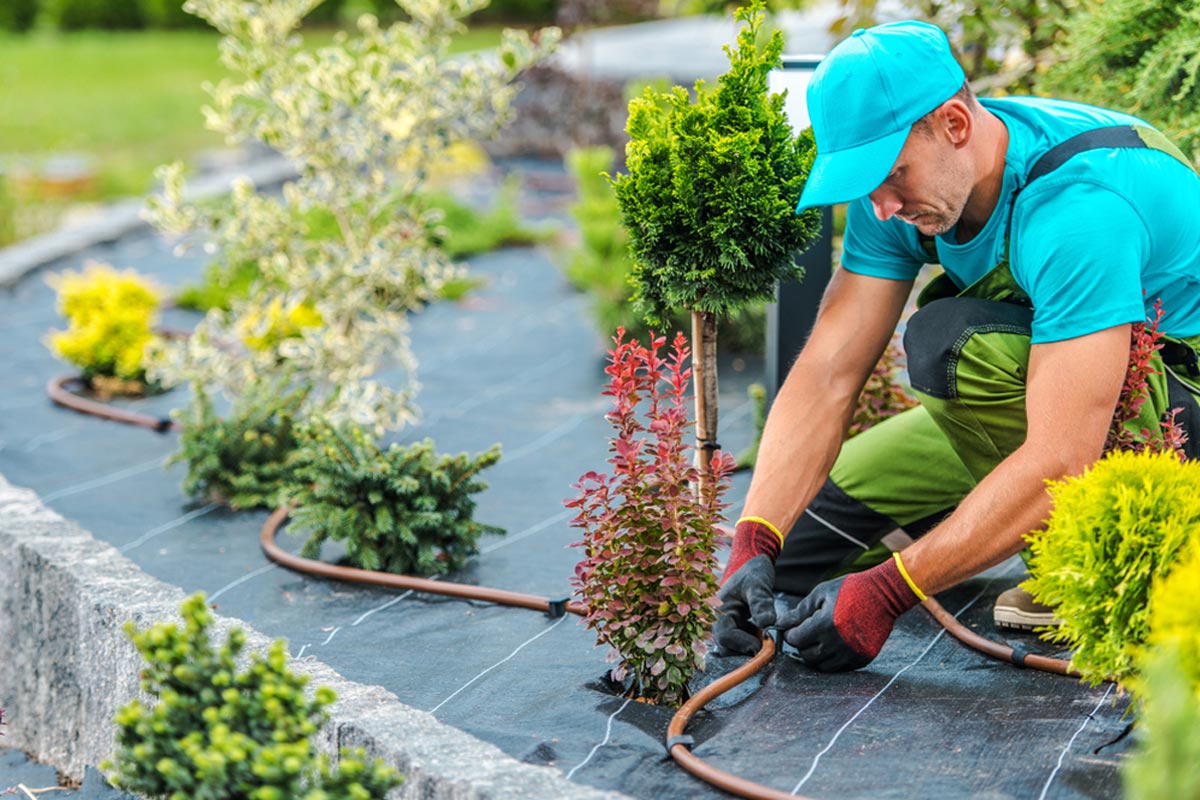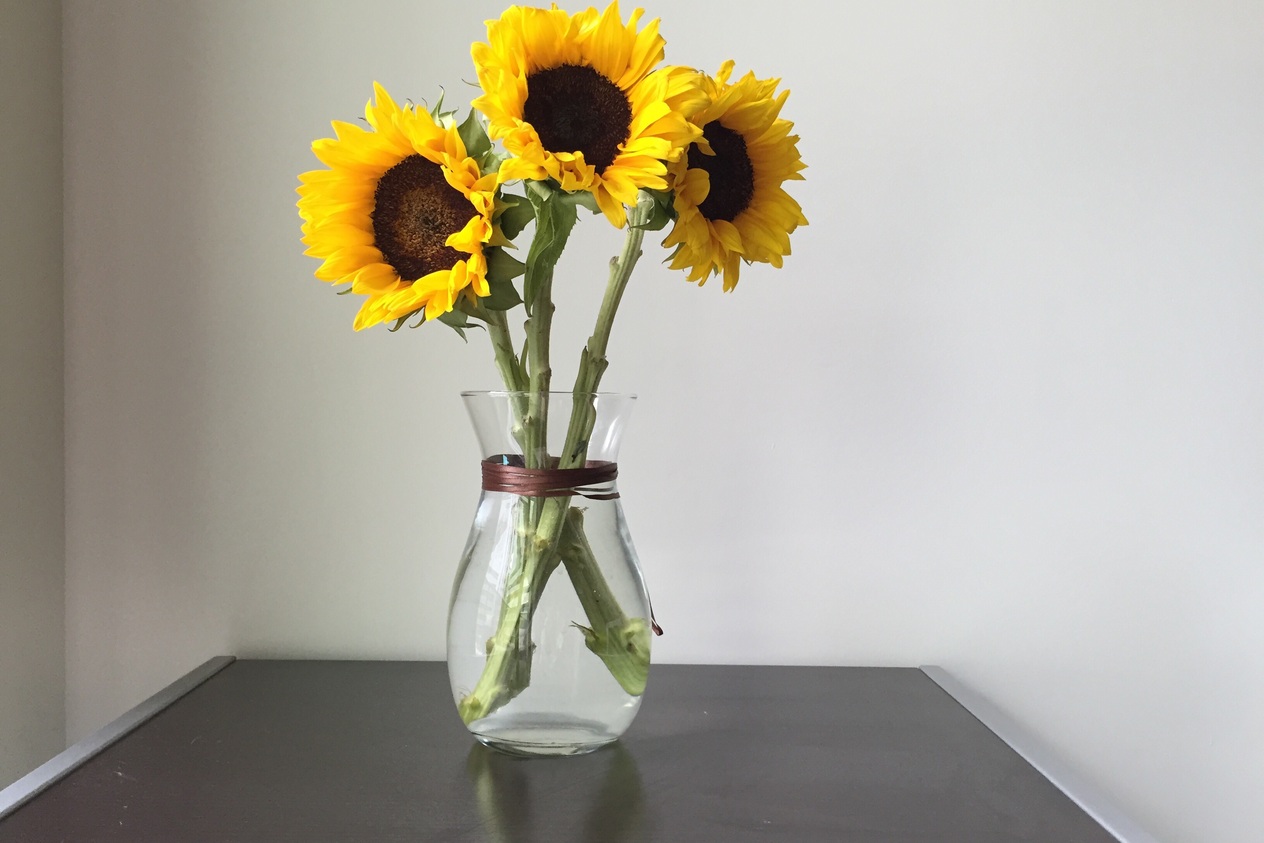Home>Gardening Basics>Tools and Equipment>How Long Does Drip Irrigation Tubing Last
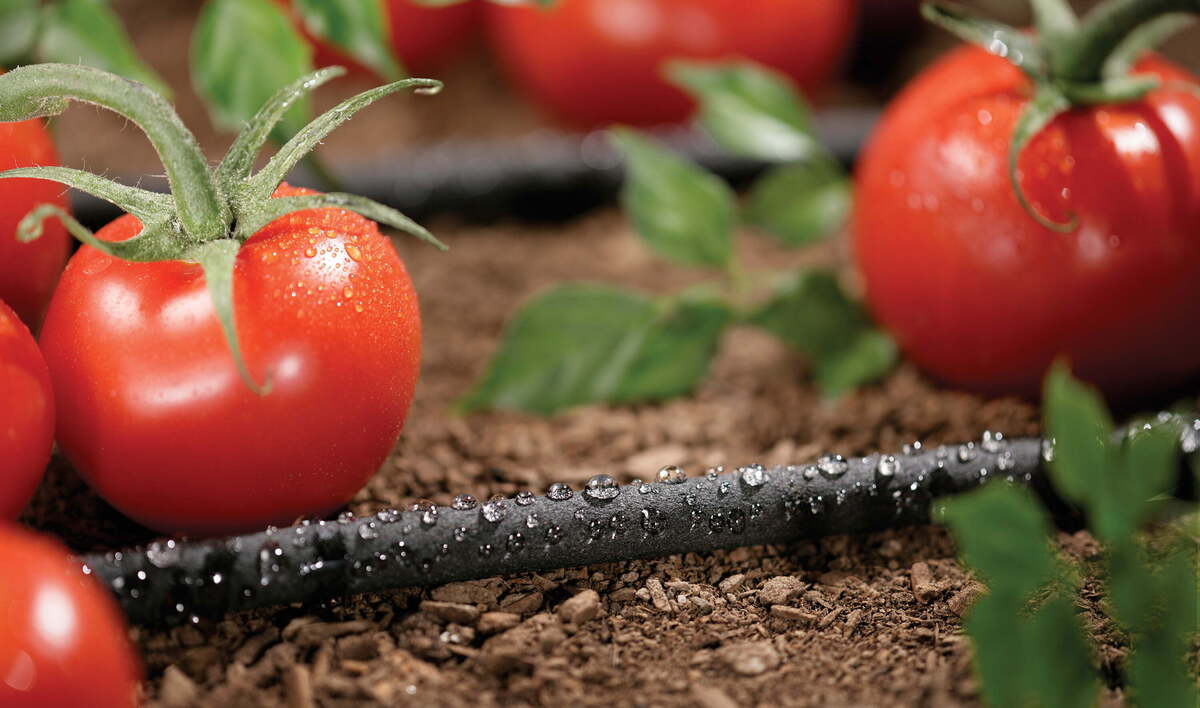

Tools and Equipment
How Long Does Drip Irrigation Tubing Last
Modified: January 22, 2024
Looking for long-lasting drip irrigation tubing? Discover how long drip irrigation tubing can last and find the best tools and equipment for your irrigation system.
(Many of the links in this article redirect to a specific reviewed product. Your purchase of these products through affiliate links helps to generate commission for Chicagolandgardening.com, at no extra cost. Learn more)
Table of Contents
Introduction
Drip irrigation tubing is an essential component of any efficient and effective irrigation system. It is a flexible, hose-like structure that delivers water directly to the roots of plants, minimizing evaporation and ensuring optimal hydration. Drip irrigation is widely used in agriculture, landscaping, and residential gardening as it conserves water and promotes healthier plant growth.
However, like any other equipment, drip irrigation tubing has a finite lifespan and will eventually deteriorate over time. Understanding how long drip irrigation tubing lasts and how to maintain its longevity is crucial in ensuring a reliable and sustainable irrigation system.
In this article, we will delve into the factors that influence the lifespan of drip irrigation tubing, the common types of tubing available, and how to extend its lifespan. We will also discuss the signs of deterioration to look out for and when it may be time to replace the tubing. By the end, you will have a comprehensive understanding of drip irrigation tubing and how to maximize its lifespan for optimal irrigation performance.
Understanding Drip Irrigation Tubing
Drip irrigation tubing, also known as drip line or micro tubing, is a crucial component of a drip irrigation system. It is a flexible tube made from a variety of materials such as polyethylene (PE) or polyvinyl chloride (PVC) that transports water from the main water source to the plants’ root zones.
The tubing is designed with small, evenly spaced holes or emitters that allow water to drip slowly and directly onto the soil surrounding the plants. This method ensures accurate water delivery and minimizes water waste through evaporation and runoff.
Drip irrigation tubing comes in different diameters, typically ranging from ½ inch to 1 inch. The choice of diameter depends on factors such as water flow rate, the number of plants to be irrigated, and the system’s operating pressure.
One key advantage of drip irrigation tubing is its flexibility, which allows it to conform to the contours of the landscape and reach plants in awkward or hard-to-reach areas. This flexibility enables precise water delivery, even in tight spaces or irregularly shaped planting areas.
Another important consideration when using drip irrigation tubing is the spacing between emitters. The spacing, which can range from 6 inches to 24 inches, determines the distribution of water across the planting area. It should be chosen based on the water needs of the plants and the soil’s moisture-holding capacity.
Understanding the characteristics and specifications of drip irrigation tubing is essential for selecting the right type and size for your specific irrigation needs. Proper selection and installation of drip irrigation tubing will ensure efficient water usage and promote healthy plant growth.
Factors Affecting the Lifespan of Drip Irrigation Tubing
The lifespan of drip irrigation tubing can vary depending on several factors. Understanding these factors is crucial in determining how long your tubing will last and when it may need replacement. Here are some key factors that can affect the lifespan of drip irrigation tubing:
- Quality of the tubing: The quality of the materials used in manufacturing the tubing plays a significant role in its lifespan. High-quality tubing made from durable materials like UV-resistant polyethylene (PE) or polyvinyl chloride (PVC) will generally have a longer lifespan compared to lower-quality alternatives.
- Exposure to sunlight: Drip irrigation tubing is exposed to direct sunlight during operation. Prolonged exposure to UV rays can lead to degradation and deterioration of the tubing material over time. UV-resistant tubing is designed to withstand sunlight exposure and has a longer lifespan as a result.
- Water quality: The quality of the water used in the irrigation system can impact the lifespan of the tubing. Water with high acidity or high mineral content can cause corrosion and clogging of the emitters, reducing the efficiency and lifespan of the tubing. Using filtered or treated water can help mitigate these issues.
- Operating pressure: The operating pressure of the drip irrigation system can impact the longevity of the tubing. Excessive pressure can cause stress on the tubing walls, leading to cracks, leaks, or even bursts. It is important to ensure that the system operates within the recommended pressure range for the tubing being used.
- Environmental conditions: Extreme weather conditions, such as freezing temperatures or high heat, can impact the lifespan of drip irrigation tubing. Freezing temperatures can cause the tubing to become brittle and crack, while intense heat can accelerate the breakdown of the tubing material. Proper insulation and shading can help mitigate these effects.
- Maintenance and care: Regular maintenance and care are crucial for extending the lifespan of drip irrigation tubing. This includes periodic inspection for clogs, leaks, or damage, cleaning or replacing clogged emitters, and ensuring proper drainage to prevent water buildup. Proper winterization and storage during the off-season are also important for preserving the tubing.
By considering these factors and taking appropriate measures, such as using high-quality tubing, protecting it from sunlight, maintaining water quality, operating within recommended pressures, and implementing proper maintenance practices, you can maximize the lifespan of your drip irrigation tubing and ensure a reliable and efficient irrigation system.
Common Types of Drip Irrigation Tubing
When it comes to drip irrigation tubing, several common types are available, each with its own unique characteristics and applications. Understanding the different types can help you choose the most suitable tubing for your irrigation needs. Here are some of the most common types of drip irrigation tubing:
- Flexible Polyethylene (PE) Tubing: This is the most popular and widely used type of drip irrigation tubing. It is flexible, easy to install, and resistant to UV rays, making it durable and long-lasting. PE tubing is available in various diameters and wall thicknesses to accommodate different flow rates and system pressures. It is suitable for both above-ground and buried installations.
- Polyvinyl Chloride (PVC) Tubing: PVC tubing is rigid and durable, making it ideal for above-ground installations. It is resistant to corrosion and provides excellent water flow. However, PVC tubing is not as flexible as PE tubing, which can limit its use in certain landscape configurations.
- Drip Tape: Drip tape consists of a flat, thin-walled tubing with built-in emitters. It is typically made from recycled polyethylene and is ideal for row crops and large-scale agricultural applications. Drip tape is cost-effective and easy to install. However, it has a shorter lifespan compared to other types of tubing and may need more frequent replacement.
- Soaker Hose: Soaker hose is a porous tubing that effectively releases water along its entire length. It is often used for watering gardens, flower beds, and shrubs. Soaker hose provides gentle and consistent water distribution, minimizing water runoff and wastage. However, it is less suitable for precision irrigation as the water coverage can be less uniform.
- Pressure-Compensating Tubing: Pressure-compensating tubing is designed to deliver a consistent flow rate regardless of variations in water pressure. This ensures uniform water distribution throughout the entire system, even in areas with varying elevations or lengthy tubing runs. Pressure-compensating tubing is ideal for slopes, large-scale installations, or areas with uneven water pressure.
Each type of drip irrigation tubing has its own advantages and limitations, and the choice depends on factors such as the application, water source, system design, and budget. It is important to carefully consider these factors and consult with a knowledgeable professional to select the most suitable type of tubing for your specific irrigation needs.
How to Extend the Lifespan of Drip Irrigation Tubing
Proper maintenance and care are key to extending the lifespan of drip irrigation tubing. By implementing the following practices, you can ensure that your tubing remains in optimal condition for longer:
- Regular Inspection: Periodically inspect your drip irrigation tubing for any signs of damage, such as cracks, leaks, or clogs. This allows you to identify and address potential issues early on, preventing further damage and prolonging the lifespan of the tubing.
- Clean the Emitters: Over time, emitters can become clogged with debris, affecting the water flow and distribution. Regularly clean the emitters to remove any blockages. You can do this by removing the emitters and soaking them in a mild cleaning solution or using a small tool to clear out the debris.
- Manage Water Quality: The quality of the water used in the irrigation system can impact the lifespan of the tubing. If the water contains high levels of mineral deposits or sediment, it can lead to clogging or corrosion. Use filtered or treated water to minimize these effects and prolong the lifespan of your tubing.
- Proper Winterization: Before the onset of freezing temperatures, it is important to properly winterize your drip irrigation system. Drain the water from the tubing to prevent freezing and potential damage. You can use compressed air to blow out the remaining water, ensuring that the tubing is completely dry before storage.
- Protect from Sunlight: Prolonged exposure to sunlight can degrade the tubing material. If the tubing is above ground, consider using shading devices or covers to protect it from direct sunlight. Alternatively, opt for UV-resistant tubing that is specifically designed to withstand sun exposure and has a longer lifespan.
- Handle with Care: When installing or handling the tubing, be gentle to avoid unnecessary stress or damage. Do not walk on or drive over the tubing, as this can cause cracks or leaks. Use caution when using tools near the tubing to prevent accidental punctures or cuts.
- Proper Storage: If you need to store the drip irrigation tubing during the off-season, make sure to do so properly. Clean the tubing thoroughly, remove any excess water, and store it in a cool, dry place. Avoid storage in areas with extreme temperatures or exposure to direct sunlight.
By following these practices, you can significantly extend the lifespan of your drip irrigation tubing. Regular inspection, cleaning, proper water management, winterization, protection from sunlight, careful handling, and correct storage all contribute to maintaining the tubing’s durability and performance over time.
Signs of Deterioration in Drip Irrigation Tubing
Over time, drip irrigation tubing can deteriorate due to various factors such as exposure to sunlight, water quality, and wear and tear. It is important to be aware of the signs of deterioration so that you can identify and address any issues promptly. Here are some common signs to look out for:
- Cracks or Leaks: Visible cracks or leaks in the tubing are clear indicators of deterioration. These can occur due to aging, excessive pressure, or physical damage. Cracks and leaks can lead to inefficient water distribution and should be repaired or replaced as soon as possible.
- Emitters Clogging: If you notice a significant reduction in water flow or uneven water distribution in your irrigation system, it may be due to clogged emitters. Clogs can result from debris, sediment, or mineral deposits in the tubing. Regular inspection and cleaning of the emitters can help prevent clogging and ensure proper water distribution.
- Brittleness or Rigidity: Deteriorated drip irrigation tubing may become brittle or rigid. This can occur due to prolonged exposure to sunlight, extreme temperatures, or aging. Brittle tubing is prone to cracking, while rigid tubing may be difficult to install or adjust. Flexible and pliable tubing is essential for efficient irrigation, so consider replacing brittle or rigid tubing.
- Color Fading: Sunlight exposure can cause the color of drip irrigation tubing to fade over time. If you notice significant color changes, such as a shift from black to gray or a noticeable lightening of the tubing material, it may be an indication of UV damage and potential deterioration. Tubing with substantial color fading should be evaluated for replacement.
- Reduced Water Pressure: If you notice a decrease in water pressure in your drip irrigation system, it could be a sign of tubing deterioration. The reduced pressure can result from factors such as tubing clogs, leaks, or damage, affecting the performance and efficiency of the system. Regular inspection and maintenance can help identify and address these issues.
- Visible Wear and Tear: Inspect the tubing for any visible signs of wear and tear, such as scratches, punctures, or worn-out areas. These can occur due to physical damage, improper handling, or contact with sharp objects. Any visible wear and tear should be repaired or replaced to prevent further deterioration.
It is important to address these signs of deterioration promptly to avoid further damage to your drip irrigation system. Regular inspection, maintenance, and timely replacement of deteriorated tubing will ensure the optimal performance and longevity of your irrigation system.
Replacing Drip Irrigation Tubing
Eventually, there comes a time when drip irrigation tubing needs to be replaced. Knowing when and how to replace the tubing is essential for the continued efficiency and effectiveness of your irrigation system. Here are some key considerations when it comes to replacing drip irrigation tubing:
- Inspecting the Tubing: Regularly inspect your drip irrigation tubing for signs of deterioration, such as cracks, leaks, or significant wear and tear. If multiple sections of the tubing show signs of damage or if the tubing is old and worn, it may be time for a replacement.
- System Redesign or Expansion: If you are planning to redesign your landscape or expand your current irrigation system, it may be necessary to replace the tubing to accommodate the new layout or increased water demands. Evaluate whether the existing tubing can meet the new requirements, or if replacing it with a different type or size is necessary.
- Upgrading to Newer Technology: Over time, advancements in drip irrigation technology may offer improved efficiency and performance. If your current tubing is outdated or no longer meets your needs, consider replacing it with newer, more technologically advanced options that can enhance water conservation and irrigation precision.
- Addressing Clogs or Inefficiencies: If you have tried cleaning the emitters and addressing clogging issues without success, it might be an indication that the tubing itself is compromised. Replacing the tubing can help restore proper water flow and distribution, ensuring optimal irrigation performance.
- Changing Environmental Conditions: If there have been significant changes in environmental conditions, such as increased sunlight exposure or extreme temperature fluctuations, it may be necessary to replace the tubing with UV-resistant or more durable options that can withstand these conditions.
When replacing drip irrigation tubing, it is important to follow proper installation guidelines. This includes ensuring proper alignment, secure connections, and appropriate spacing between emitters. It is also a good opportunity to evaluate and adjust the overall design and layout of your irrigation system to optimize water efficiency and plant health.
Regular maintenance, monitoring, and periodic replacement of drip irrigation tubing are necessary to ensure the continued performance and long-term sustainability of your irrigation system. By staying vigilant, you can proactively address any issues and provide your plants with the optimal water delivery they need for healthy growth.
Conclusion
Drip irrigation tubing is a vital component of any efficient and sustainable irrigation system. Understanding its lifespan, maintenance requirements, and signs of deterioration is crucial in achieving the best results for your plants and minimizing water waste. By considering the factors that affect the lifespan of drip irrigation tubing, you can make informed choices when selecting the appropriate type and material for your specific needs.
Regular inspection, cleaning, and maintenance are key to extending the lifespan of drip irrigation tubing. By addressing issues such as cracks, leaks, clogs, and wear and tear in a timely manner, you can avoid further deterioration and ensure the optimal performance of your irrigation system.
Replacing drip irrigation tubing becomes necessary when it no longer meets your needs, shows significant signs of deterioration, or when you are redesigning or expanding your system. Choosing the right time to replace the tubing and following proper installation guidelines will help maintain the efficiency and effectiveness of your irrigation system.
In conclusion, drip irrigation tubing plays a crucial role in conserving water, promoting healthy plant growth, and maintaining a sustainable irrigation system. By understanding its characteristics, lifespan, maintenance requirements, and when replacement is necessary, you can maximize the longevity and performance of your drip irrigation system, ensuring the health and vitality of your plants for years to come.
